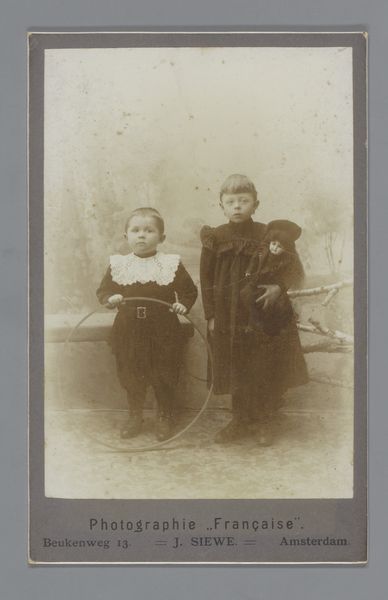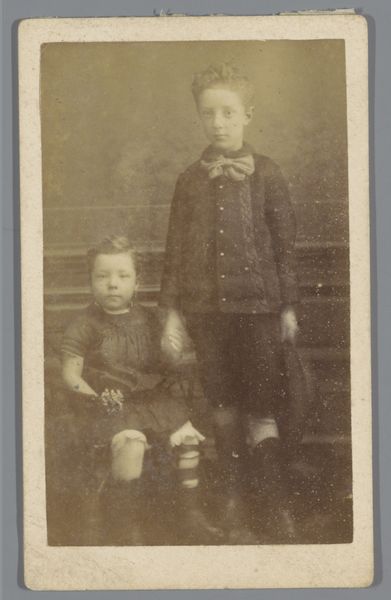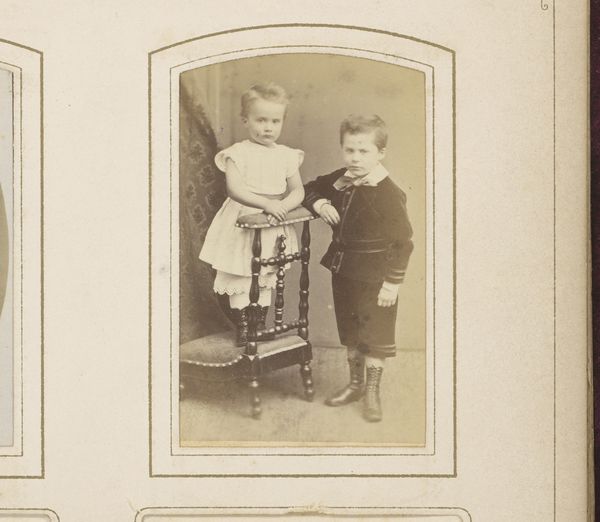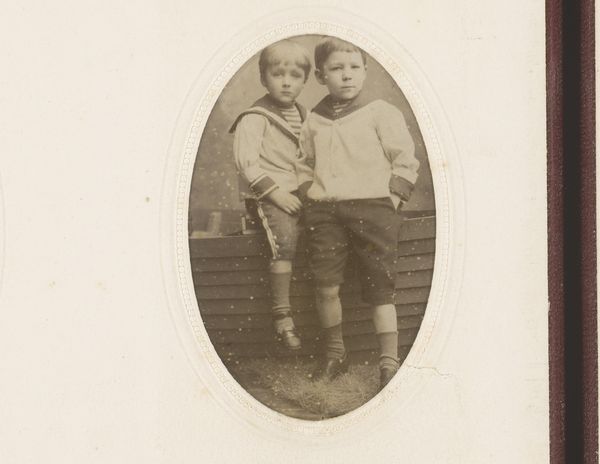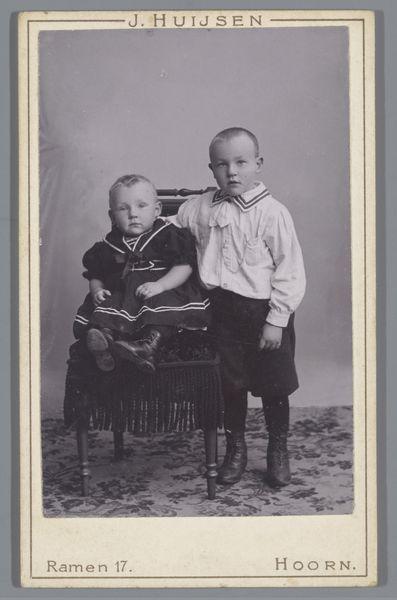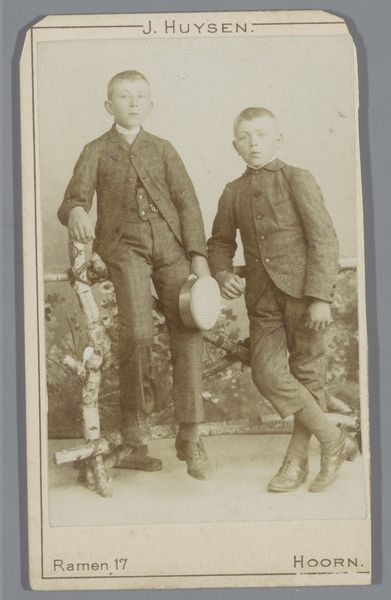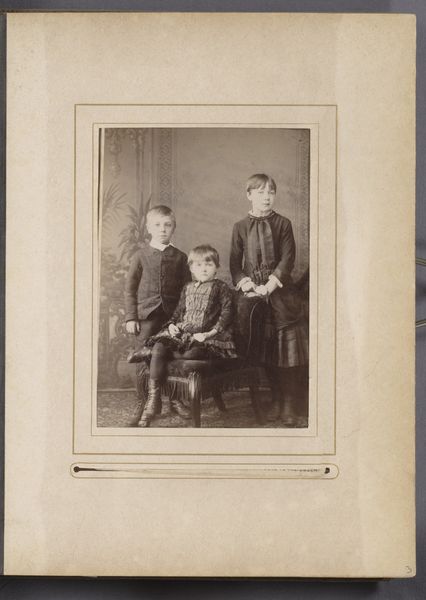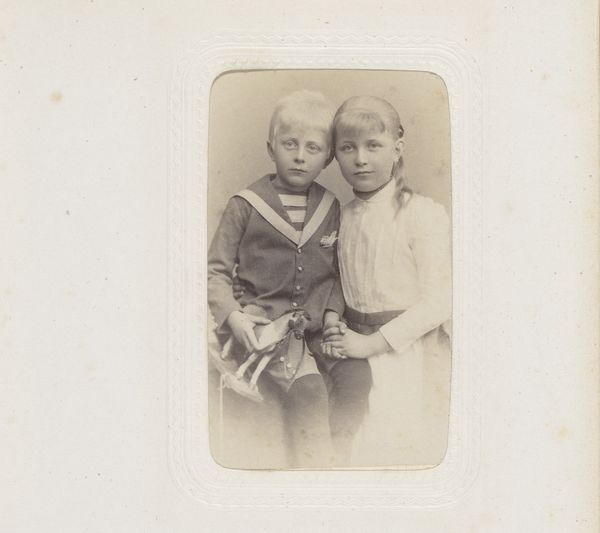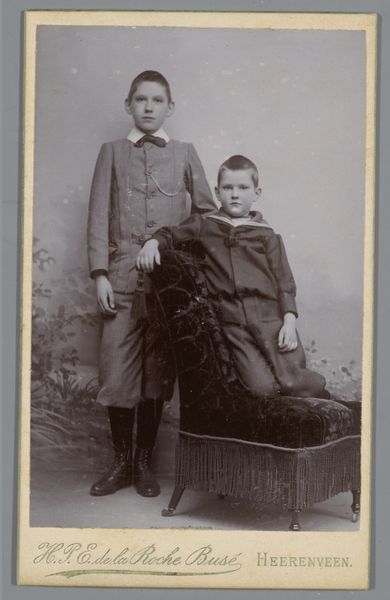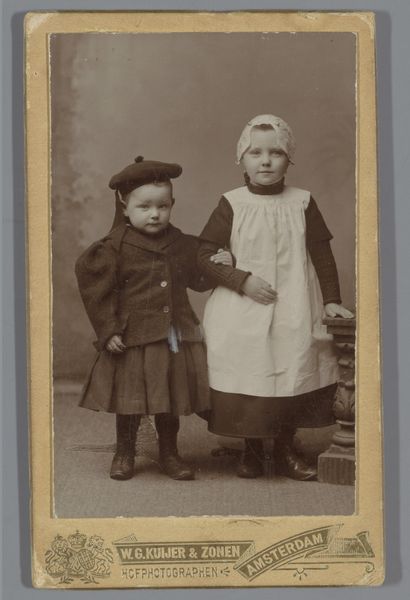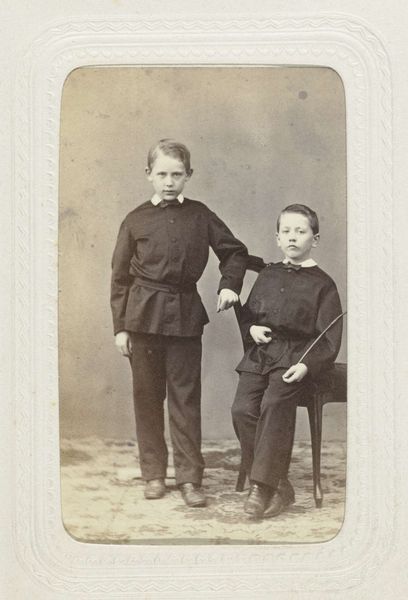
Portret van een jongen met tennisracket in de hand en een jongen met hoepel in de hand 1883 - 1910
0:00
0:00
johanneslaurenstheodorushuijsen
Rijksmuseum
photography
#
portrait
#
photography
#
genre-painting
#
realism
Dimensions: height 82 mm, width 51 mm
Copyright: Rijks Museum: Open Domain
Curator: This photograph, housed here at the Rijksmuseum, is titled "Portret van een jongen met tennisracket in de hand en een jongen met hoepel in de hand." The artist is Johannes Laurens Theodorus Huijsen, and the piece is dated sometime between 1883 and 1910. Editor: There’s a formality to it that I find immediately striking. The stiff poses, the dark clothing… it all feels quite somber despite the presence of toys. And what sort of materials are we dealing with? Albumen print, perhaps? Curator: Indeed. It reflects the conventions of portraiture at the time, a time when photography was still quite a considered process, unlike the immediacy we're accustomed to today. The studio setting, the props, they all speak to the performative aspect of constructing an image for public consumption. Consider the rise of amateur photography and its democratization during this era, contrasting with the formal settings imposed here, a sign of middle-class aspirations towards something like gentry. Editor: You make a good point about the social pressures in creating this kind of display for photographic materiality. But let's consider what these toys represent here in terms of material value. The tennis racket is strung and sturdy. The hoop looks equally robust. To what extent does their presence highlight the growing consumer market and availability of mass-produced goods geared toward children from well-off families? Curator: Precisely. The objects become symbolic markers of status and the performative adoption of leisure activities becoming increasingly accessible to middle-class youth. These accoutrements act as signifiers within a complex social structure striving to emulate aristocratic traditions. Editor: And note that each toy alludes to work as well as play. The tension between them might symbolize the kind of class aspiration we are talking about here: children are meant to "work" at play to reproduce middle-class mores for generations to come. I keep considering what kind of labor would have to take place, socially as well as economically, to produce this scene. Curator: Viewing this work has only underscored how a seemingly simple portrait can reveal layers of social and cultural complexity and shift through the changing landscapes of imagery and political motivations. Editor: Absolutely. Looking at this print, the material considerations bring another stratum to understand labor relations and social context under new frameworks for leisure.
Comments
No comments
Be the first to comment and join the conversation on the ultimate creative platform.
